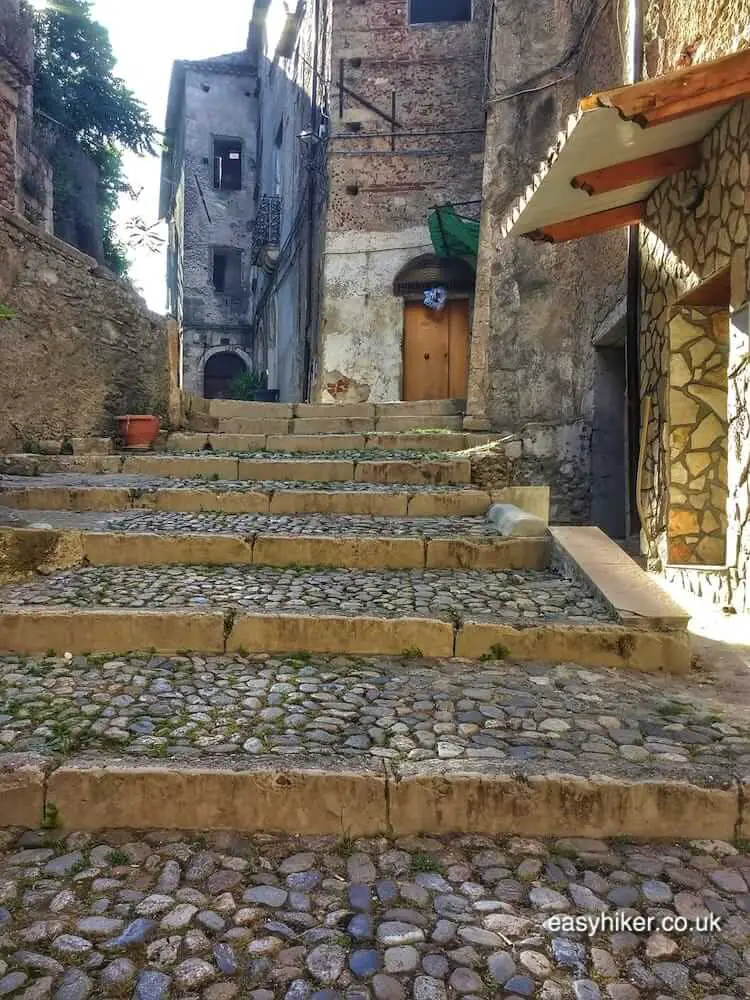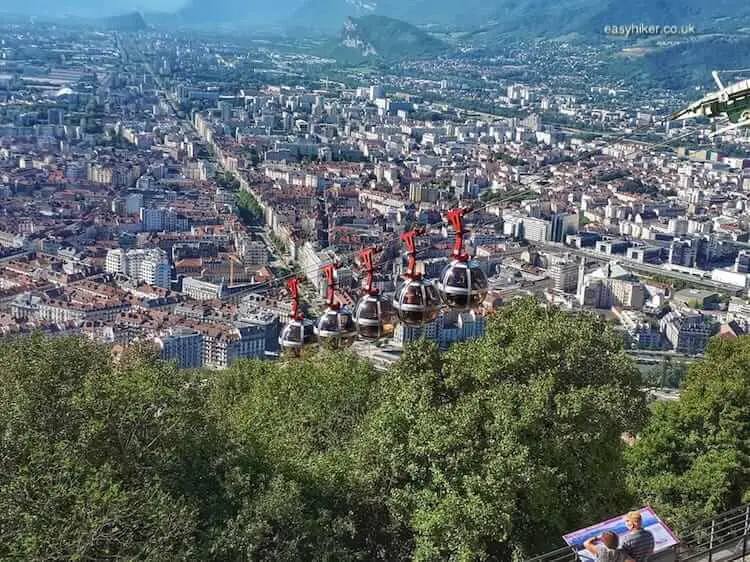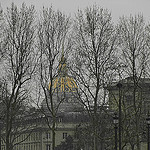The Calabrian town of Cosenza – situated on the toes of the Italian boot – appears to be haunted by its own past. Much of this is down to the old town’s video-game architecture and the mix of busy street life and eerily quiet lanes, often within a cat’s whisker of each other.

But partly this is also because Cosenza does hide one of the greatest mysteries in all of human history. Somewhere within its walls, one of the greatest treasures ever known to mankind has been buried – although nobody knows exactly where. Legends have been spun around this treasure for centuries, but let’s line up the facts first.
In Search of the Treasures of Cosenza
In the early 5th century, the Visigoths, semi-assimilated Roman residents on the Empire’s eastern fringes, reacted to increasing pressures from their hosts on one side and hostile enemy forces on the other by invading the Italian mainland (highlighting the risks of an immigration policy that veers between half-hearted toleration and downright hostility).
In 410, they arrived at the gates of Rome and eventually took the Eternal City on their third siege attempt. After three days of looting and pillaging, the Visigoth invaders left with all the portable wealth of the ancient world’s richest city: chests full of ancient coins, jewelry made by the Empire’s finest goldsmiths and unique treasures such as the Menorah of Moses – plus 25 tons of gold and 500 tons of silver.
Their plan was to head south and then to sail across the Mediterranean in the direction of North Africa, but when – after a march of three months – they had reached the town of Cosentia, their king caught a tropical fever and died soon after. This king was the legendary Alaric …
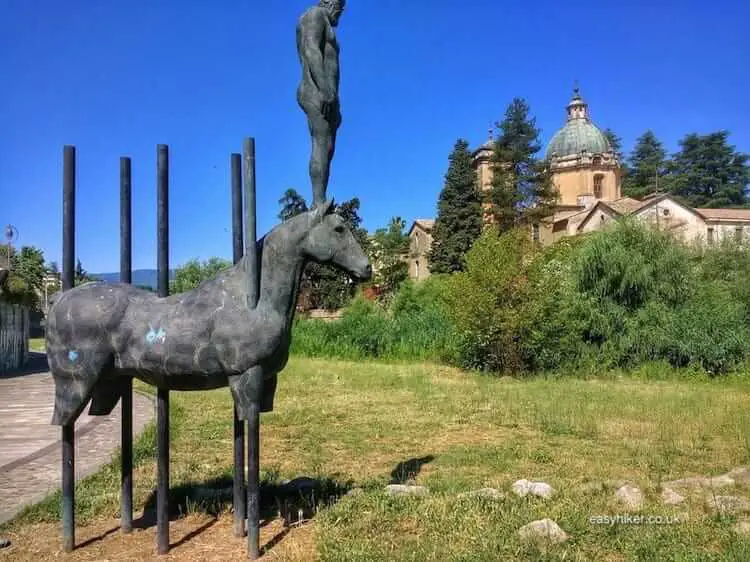
… whose statue near the centre of modern Cosenza (erected in 2016) pays tribute to his lasting fame.
This is where the undisputed facts end, because what happened after Alaric’s death is shrouded in uncertainty.
Gothic funeral rites would have obliged his descendants to bury the king (upright, on his horse) in an inaccessible place together with all his earthly treasures. This grave, however, was never found.
The legend claims that Alaric’s men decided to temporarily divert the local river – called the Busento – and to bury their king at its bottom. The slaves who had dug the royal tomb were then summarily executed so they could not give away the location – which has remained a secret ever since.
So, where would one start the search for the treasures of Cosenza?
You do not need to be a hydraulic engineer to realize that the only body into which you can divert a river is another river. Fortunately, such a second river was right at hand in Cosentia: this was the Crati, which still meets the Busento at the bottom of the old town, right underneath today’s Church of Santo Domenico.
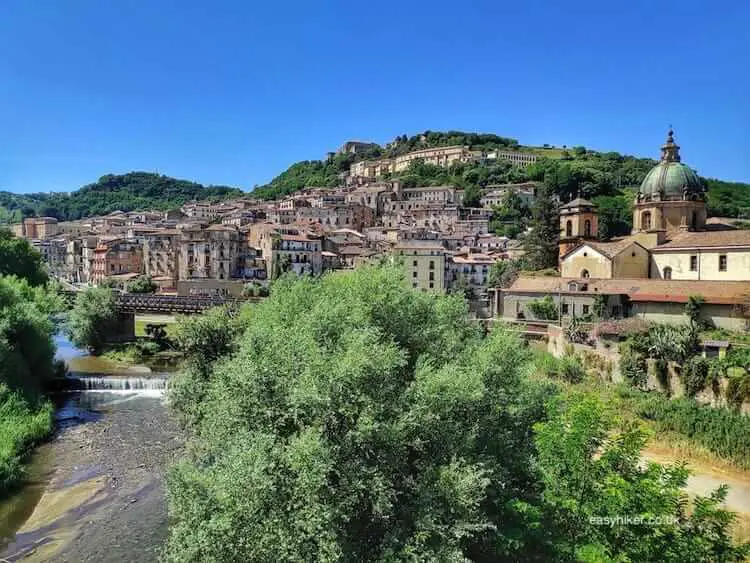
This meeting of the Busento and the Crati is not a confluence of two rivers that approach each other from similar directions in a gradually narrowing angle (in the shape of a “V”): the Busento (coming from the west) and the Crati (coming from the north) are joined in angle of almost 90 degrees (in the shape of an “L”).
So if we believe the legend, any such diversion would only have been feasible on the very last metres before the confluence.
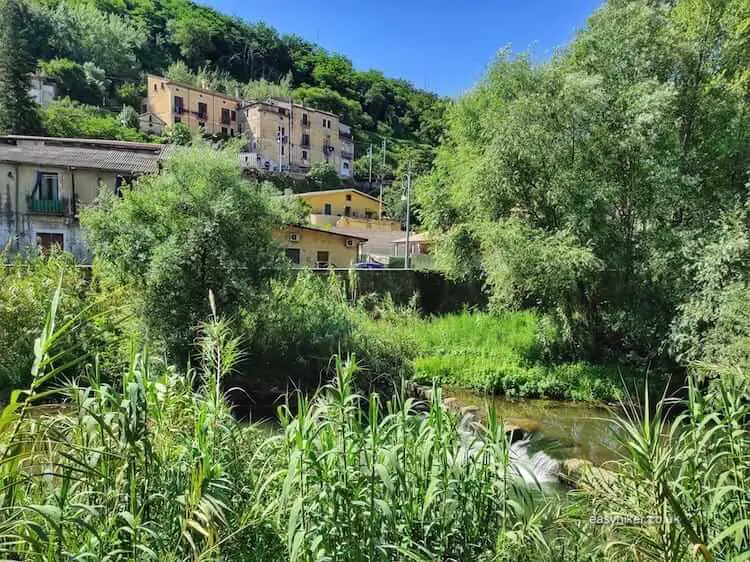
Which means, the royal tomb must be somewhere very near to the church.
Please do not forget that you have read it here first. In case you find Alaric’s legendary treasure, a little “thank you” in the form of a few tons of gold will be gratefully appreciated. You know how to contact us.

But before you get carried away: bear in mind that rustlers and raiders have been searching these grounds for 1600 years. The latest frenzy occurred in 2015 when modern treasure hunters, using 21st century technology including drones, georadar and remote sensing, thought they had found evidence for the underground presence of precious metals. But their application for a permit to dig up the area was summarily dismissed by the responsible government authority which apparently thought the whole project was a mere publicity stunt. (Or maybe someone in there just wanted to keep the loot for himself.)
So on second thought, it may be best to leave your metal detector at home after all– and bring a camera instead. Because there are many other things to see in Cosenza. The atmospheric Old Town is well worth a visit, …
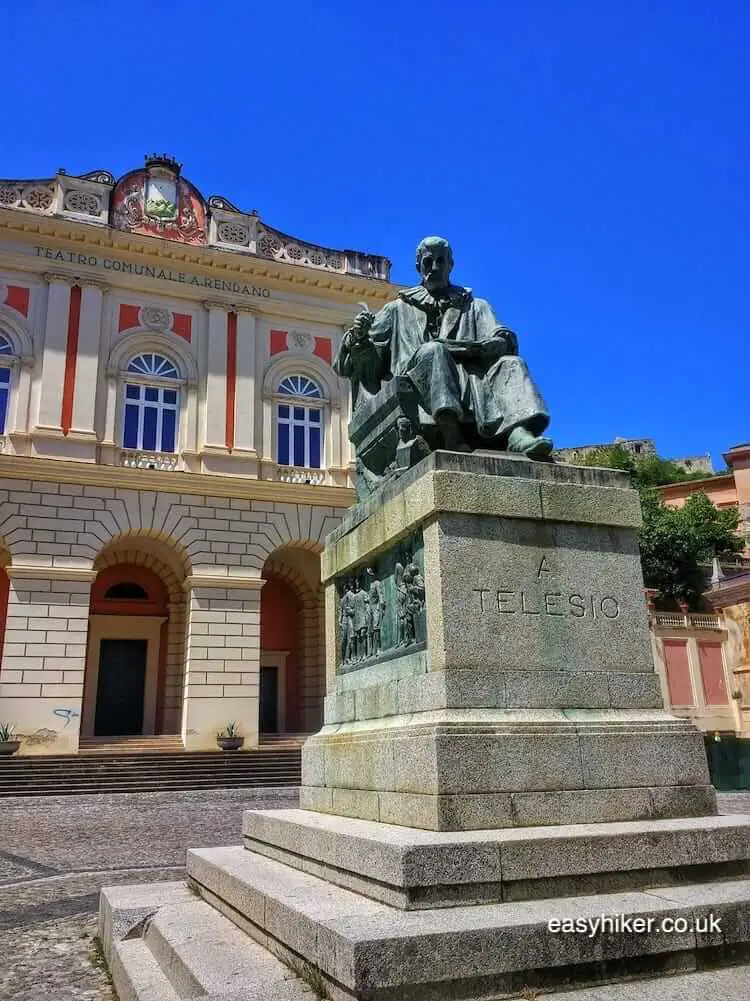
… but the Busento itself also rewards further exploration. Start your walk on Lungobusento Tripoli in the west of town, where you can follow the river on a leafy footpath through an equally leafy residential quarter.
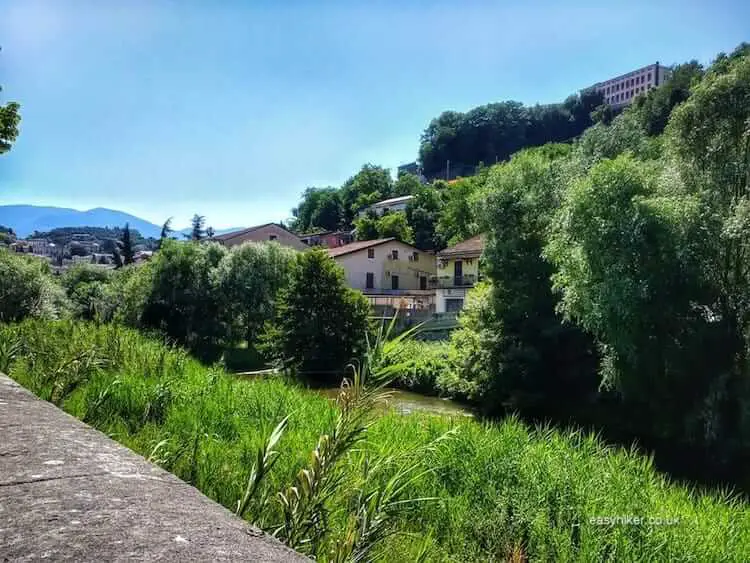
Having conjoined the Crati and the Busento, the river then flows through the town centre underneath the Ponte dei Pignatari.
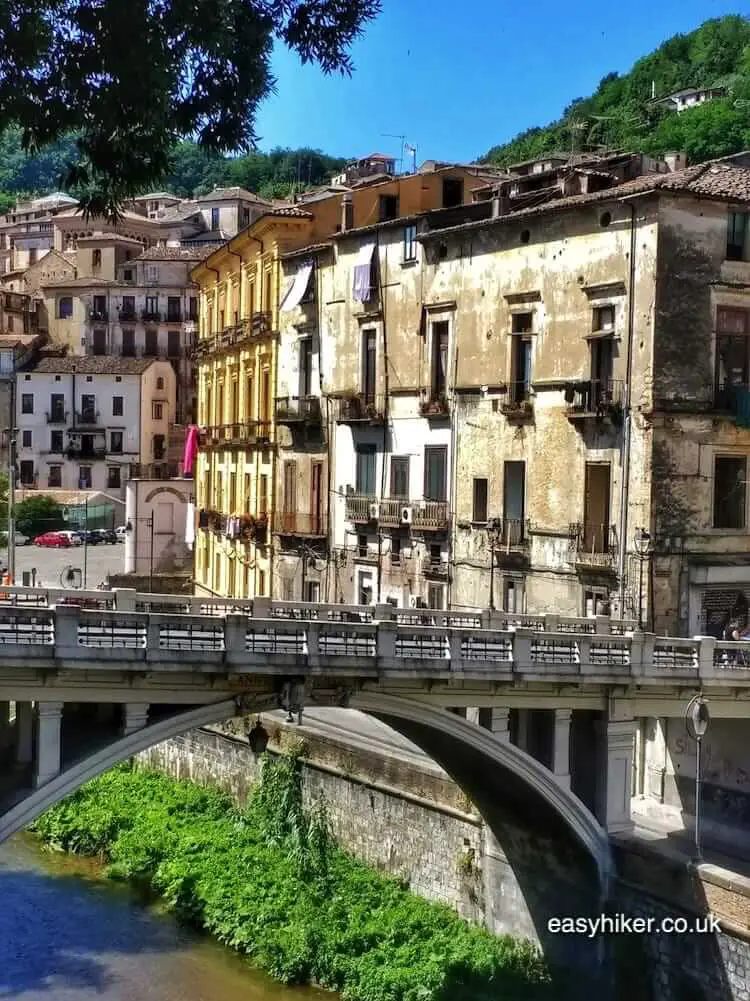
You can follow the river on a comfortable walkway out of town – past the Centro Storico that is rising on your right hand side – …
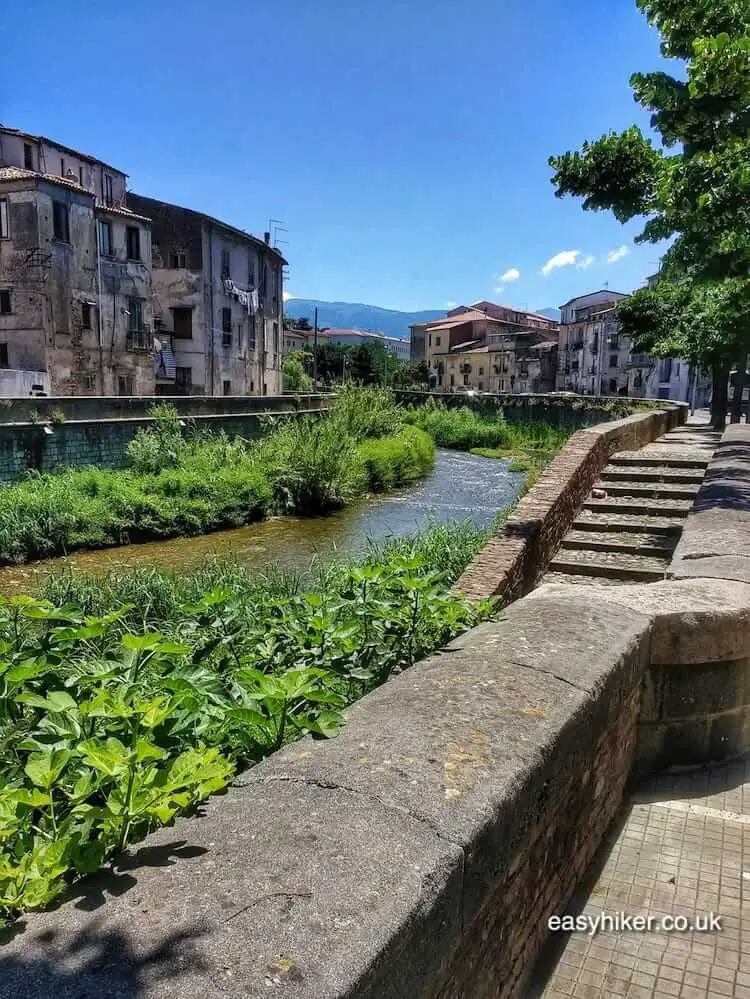
… but after a couple of kilometres or so, the river kicks to the left while the road continues straight, and that may well be the right moment to return. If you believe in the Alaric legends, you may want to pay close attention along the way: it is said that a shadow army of Visigoth warriors can still be heard on the river banks, singing songs of death and glory in praise of their legendary leader.
But you should also pay attention to the river itself – and walk down the steep bank (there are places where you can) to marvel at the dense vegetation on its surface. Which is so dense in fact that, in certain places, you cannot even see the water anymore, making the scenery look more like the Amazon than anything you would expect to find in Europe, never mind in semi-arid Calabria.
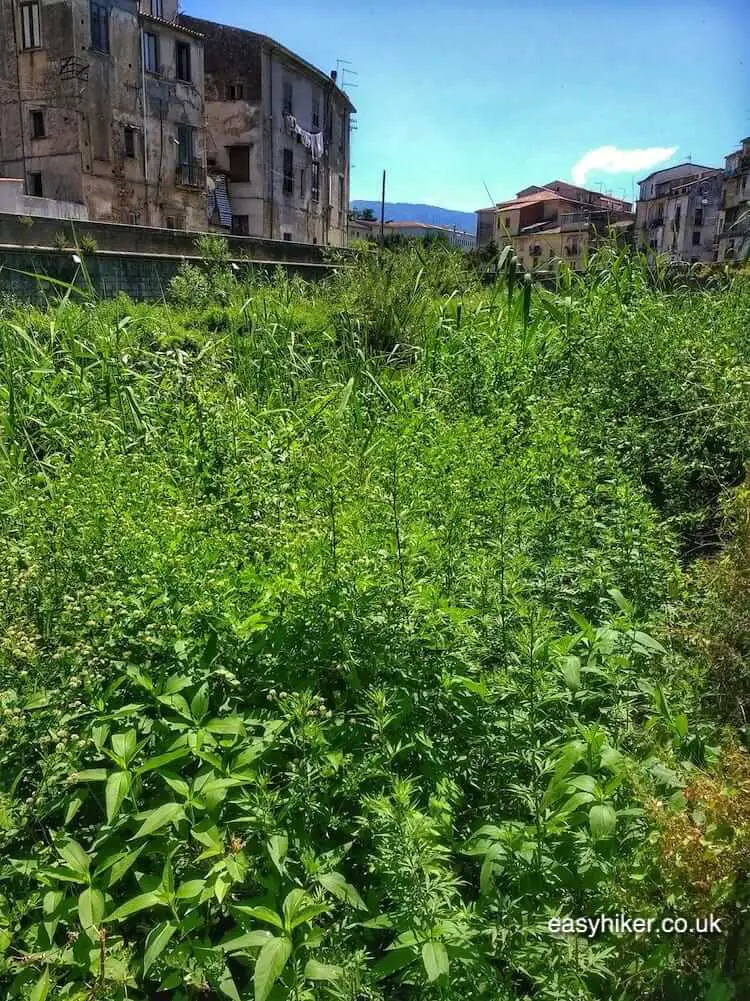
This way, you will find and bring home some treasures, after all – the best kind of treasure that you can collect during a holiday: memories that stay with you and your loved ones for years.
Next week, we will tell you where to find more such treasures in Cosenza.
